
String Art Generator
String Art Generator by Yiran is a grasshopper plugin which generates a string art sequence based on an input image. You can
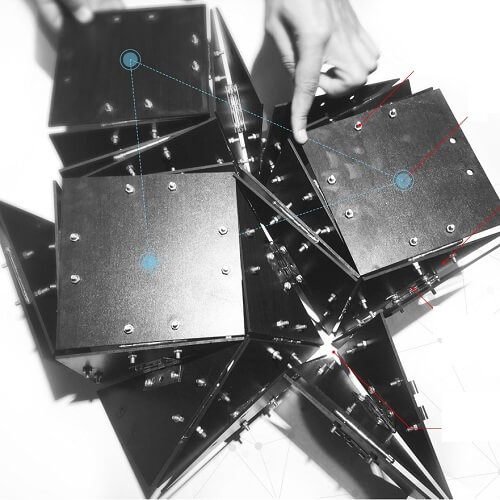
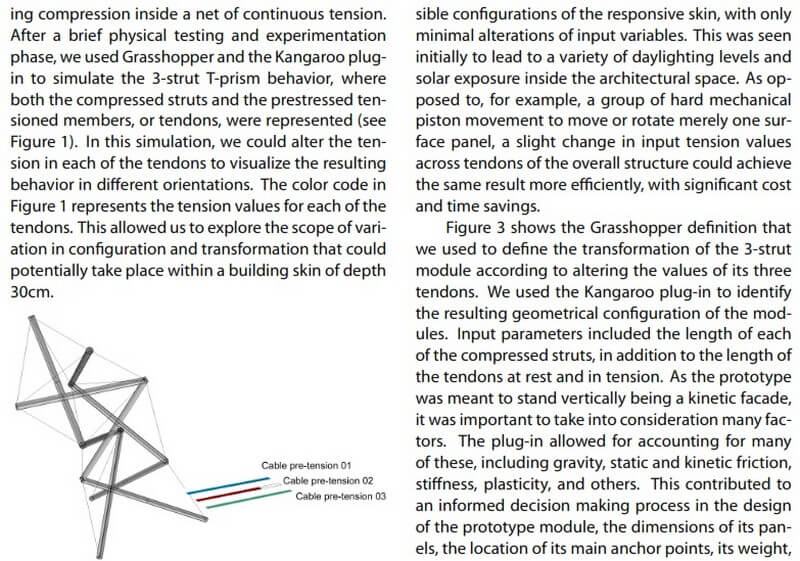
This paper by Sherif Abdelmohsen, Passaint Massoud and Ahmed Elshafei describes the process of designing a prototype for a soft responsive system for a kinetic building facade.
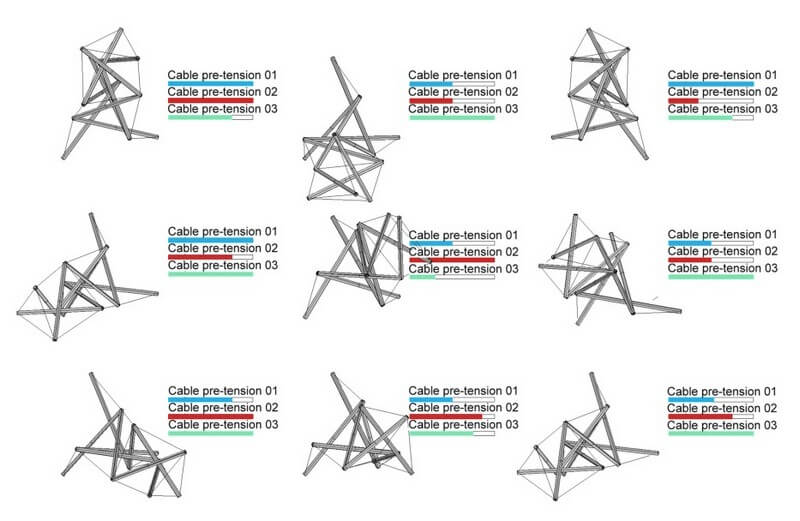
The prototype uses lightweight materials and mechanisms to generate a building facade skin that is both soft (less dependent on hard mechanical systems) and responsive (dynamically and simultaneously adapting to spatial and environmental conditions).

By combining concepts stemming from both tensegrity structures and folding mechanisms, authors develop a prototype that changes dynamically to produce varying facade patterns and perforations based on sensor-network data and feedback. They use radiation sensors and shape memory alloys to control the prototype mechanism and allow for the required parametric adaptation.
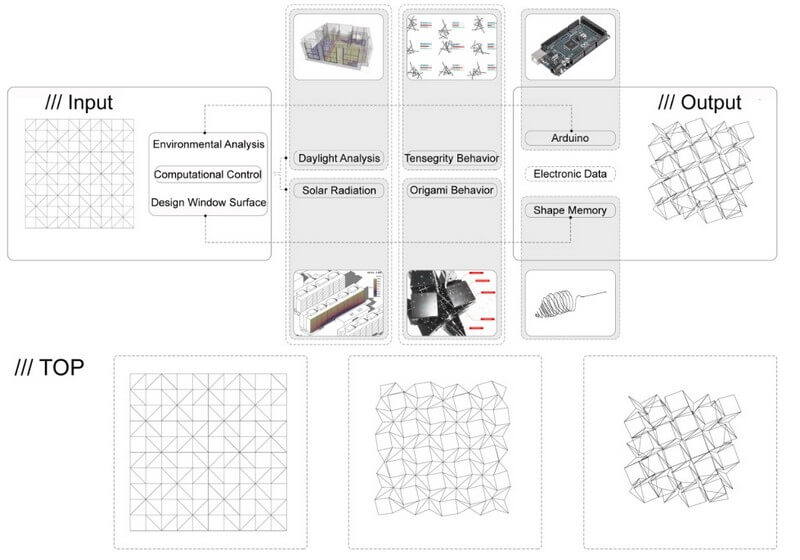
Based on the data from the radiation sensors, the lengths of the shape memory alloys are altered using electric wires and are parametrically linked to the input data. The transformation in the resulting overall surface is directly linked to the desired levels of daylighting and solar exposure. Authors conclude with directions for future research, including full scale testing, advanced simulation, and multi-objective optimization.
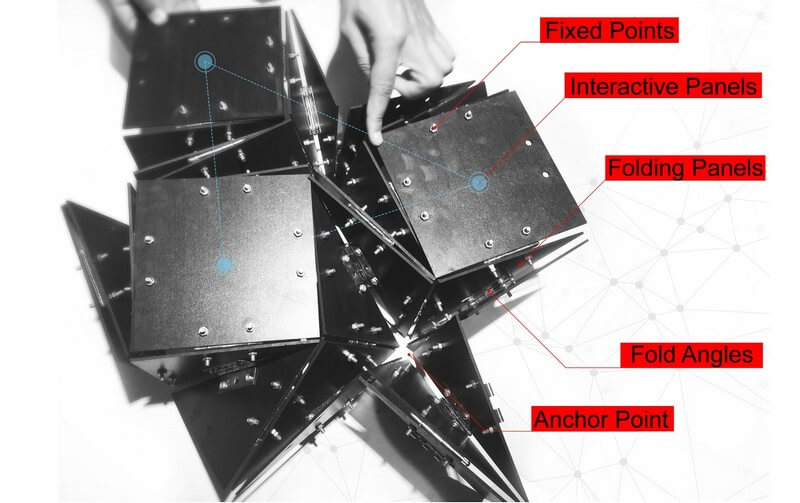

String Art Generator by Yiran is a grasshopper plugin which generates a string art sequence based on an input image. You can

This paper by Alessandro Liuti, Sofia Colabella, and Alberto Pugnale, presents the construction of Airshell, a small timber gridshell prototype erected by employing a pneumatic formwork.

In this paper by Gregory Charles Quinn, Chris J K Williams, and Christoph Gengnagel, a detailed comparison is carried out between established as well as novel erection methods for strained grid shells by means of FE simulations and a 3D-scanned scaled physical model in order to evaluate key performance criteria such as bending stresses during erection and the distance between shell nodes and their spatial target geometry.

In this paper by Frederic Tayeb, Olivier Baverel, Jean-François Caron, Lionel du Peloux, ductility aspects of a light-weight composite gridshell are developed.
Parametric Ideas for Architects @2025
This tutorial or example file is exclusive to Paracourse Members.
Paracourse is an extensive library of video tutorials and example files, designed to guide you through your parametric design journey. With over 1,500 open example files & 600 Video Tutorials, you can freely edit and adapt them for your projects—no credit required.

Learn parametric design from scratch with over 100 hours of step-by-step tutorials, covering beginner to intermediate levels. Master components and their use in the design process.

Explore our open-to-edit .gh files to see how each subject is designed parametrically using Grasshopper3D. Freely adapt them for your projects—no credit required.

Delve into complete algorithms with our advanced tutorials. Learn the logic behind each step, understand how the parts work together, and see how to apply them effectively in your designs.
Grasshopper empowers architects and designers to create sophisticated, customizable designs with ease.
Architects, industrial designers, artists, and anyone passionate about parametric design will find value in this course.
With diverse tutorials and open example files, you’ll have everything you need to tackle any design challenge.
Mastering Grasshopper with Paracourse can significantly enhance your career prospects.